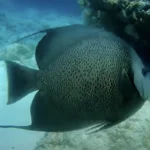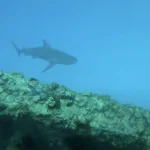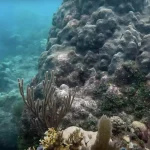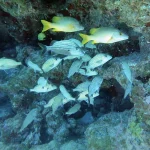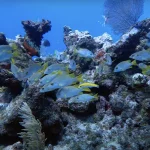Table of Contents
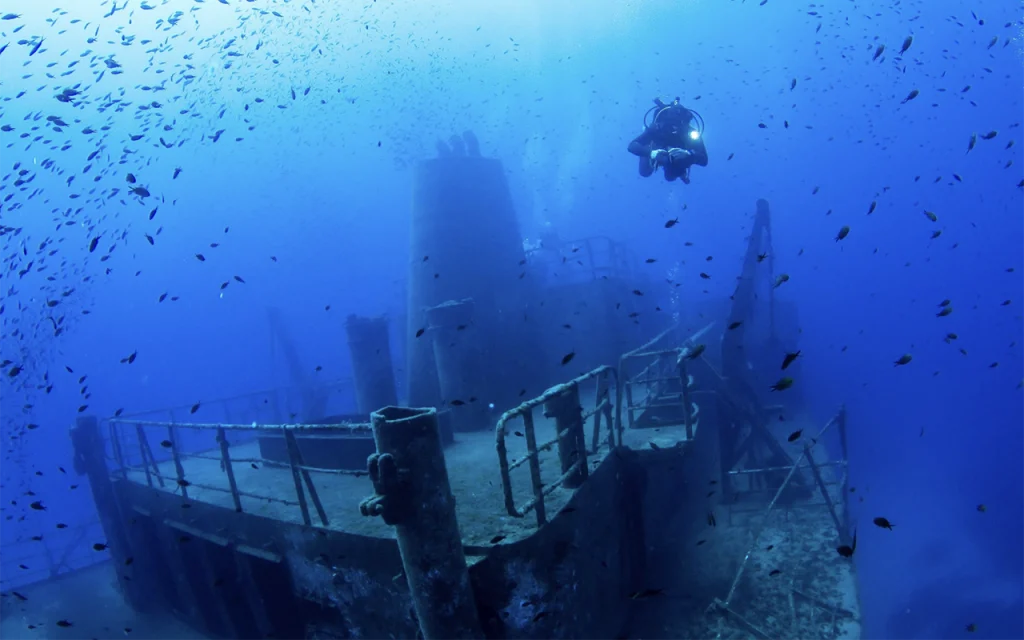
The Laertes shipwreck is unique due to its WWII history, significant cargo, and position as an artificial reef, while still being part of a larger tapestry of shipwrecks that offer diverse diving experiences along Florida’s coast.
Article at a Glance
- Historical Significance: The Laertes was a Dutch steam merchant sunk by the German U-boat U-109 during World War II, carrying military supplies, including tanks and aircraft.
- Location and Coordinates: The wreck lies approximately 13 miles off Cape Canaveral, Florida, at coordinates 28° 21’N, 80° 23’W, in relatively shallow waters, making it accessible for divers.
- Unique Diving Experience: Divers can explore the remnants of the ship’s hull, cargo holds, and various artifacts, all while experiencing the vibrant marine life that has made the wreck its home.
- Marine Life: The Laertes has become an artificial reef, attracting diverse species such as snapper, grouper, corals, and invertebrates, enhancing the underwater ecosystem.
- Safety Measures: General safety practices for divers include pre-dive briefings, the buddy system, equipment checks, adherence to depth limits, and compliance with local regulations.
- Dive Shops: Several dive shops in the Cape Canaveral area, such as Cape Canaveral Dive Center and Aqua Blue Scuba, offer trips to the Laertes, providing guided experiences for divers.
- Environmental Awareness: Divers are encouraged to respect the marine environment, avoid disturbing the wreck and surrounding ecosystem, and follow best practices for underwater conservation.
Depth and Location Coordinates
Depth
The wreckage is scattered about the site and has a relief of about 30 feet
Location Coordinates
The coordinates of the wreck are approximately 28° 21’N, 80° 23’W, which places it about 13 miles off the coast of Cape Canaveral, Florida.
What Do Scuba Divers Say About This Ship
- Visibility and Depth: Divers have noted that the wreck is located in a relatively shallow area, which can be both an advantage and a challenge. The shallow depth allows for easier access but can also lead to concerns about large ships passing overhead, which can create anxiety among divers. Some divers have reported feeling uneasy when large vessels are nearby due to the displacement and current changes they cause .
- Historical Context: The Laertes is recognized not just as a dive site but also for its historical significance, having been sunk during World War II. This aspect adds an element of intrigue for divers who appreciate exploring wrecks with rich backstories .
- Marine Life: Divers often comment on the marine life that has made the wreck its home. Shipwrecks typically attract various species, providing a vibrant ecosystem for divers to explore.
- Diving Conditions: The conditions can vary, with some divers mentioning strong currents that can complicate dives. However, the wreck’s accessibility makes it a popular spot for both novice and experienced divers .
What Kind of Marine Life Can Be Found on The Ship
- Fish Species: The wreck is home to numerous fish species, including snapper, grouper, and various schooling fish. These species are often seen swimming around the structure, providing vibrant underwater scenery for divers.
- Coral Growth: Over time, the wreck has developed a habitat for corals, which contribute to the biodiversity of the area. Coral formations can provide shelter and breeding grounds for many marine organisms.
- Invertebrates: Divers have noted the presence of various invertebrates, including sea urchins, starfish, and anemones, which often attach themselves to the wreck and surrounding structures.
- Crustaceans: Species such as shrimp and crabs can also be found in the crevices of the wreck, taking advantage of the shelter it provides.
Key Information
| Aspect | Details |
|---|---|
| Ship Name | Laertes (Dutch Wreck) |
| Type | Dutch steam merchant ship |
| Built | 1919 in Hong Kong |
| Sunk | May 3, 1942 |
| Cause of Sinking | Torpedoed by German U-boat U-109 |
| Location | 13 miles off Cape Canaveral, Florida |
| Coordinates | 28° 21’N, 80° 23’W |
| Depth | 70 feet |
| Length | 434 feet |
| Cargo | War materials (tanks, aircraft, trucks) |
| Casualties | 18 out of 66 crew members |
| Current Status | Artificial reef and dive site |
| Marine Life | Snapper, grouper, various reef fish |
| Visibility | Generally good, can vary |
| Dive Difficulty | Suitable for intermediate divers |
| Notable Features | Scattered wreckage, 30-foot relief |
What Makes The Laertes a Unique Diving Experience
Historical Significance
- World War II Context: The Laertes was a Dutch steam merchant sunk by a German U-boat during World War II. This historical backdrop adds a layer of intrigue for divers, as they explore a site that played a role in significant global events. The ship was carrying war materials, including tanks and aircraft, making it a poignant reminder of the era’s maritime conflicts .
Diving Conditions
- Accessibility: Located approximately 13 miles off the coast of Cape Canaveral, the Laertes is relatively accessible for divers. The wreck lies in shallower waters, which can be advantageous for both novice and experienced divers, allowing for easier exploration .
- Marine Life: The wreck has become an artificial reef, attracting diverse marine life. Divers can encounter various fish species, corals, and invertebrates, creating a vibrant underwater ecosystem that enhances the diving experience .
Unique Features
- Wreck Structure: The Laertes, measuring 434 feet long, provides ample structure for divers to explore. The remnants of the ship offer various nooks and crannies that harbor marine life, making each dive a new adventure .
- Artificial Reef Benefits: As an artificial reef, the Laertes contributes to marine conservation efforts by providing habitat for marine species, which can be particularly appealing for divers interested in ecology and conservation .
How Does The Laertes Compare to Other Shipwrecks in Florida
Historical Context
- World War II Casualty: The Laertes was torpedoed by the German U-boat U-109 on May 3, 1942, while carrying war materials. This event places it among the many vessels sunk by U-boats during the war, with over 40 Allied ships lost off Florida’s coast during this period.
- Significant Cargo: Unlike many other wrecks, the Laertes was transporting military supplies, including tanks and aircraft, which adds to its historical importance and provides context for divers interested in maritime history.
Diving Experience
- Accessibility: Located about 13 miles off Cape Canaveral, the Laertes is relatively accessible for divers, similar to other wrecks in Central Florida. However, its depth and conditions may vary compared to deeper wrecks, making it suitable for a wider range of diving skill levels.
- Marine Life: The Laertes has become an artificial reef, attracting diverse marine life, which is a common feature of many Florida shipwrecks. However, the specific types of fish and coral found around the Laertes may differ from those at other sites, such as the older wrecks like the Arrastre, which is popular among advanced divers due to its historical significance dating back to the 1700s.
Comparison with Other Wrecks
- Other Notable Wrecks: Florida is home to thousands of shipwrecks, with some notable examples including the SS Ocean Venus and the SS City of Veracruz, both of which were also sunk by U-boats during WWII. These wrecks, like the Laertes, offer unique diving experiences but may differ in terms of accessibility, depth, and the marine life that has colonized them.
- Diversity of Sites: The Laertes is part of a broader network of wrecks that include both naturally occurring shipwrecks and those intentionally sunk as artificial reefs. Each site offers distinct historical narratives and diving conditions, making the Laertes a unique but integral part of Florida’s underwater heritage.
What is The Full History of This Ship
Construction and Early Years
- Built: The Laertes was completed in March 1919 by Taikoo Dockyard & Engineering Co. in Hong Kong. Originally, it was operated by Ocean SS Co Ltd (Alfred Holt & Co) based in Liverpool.
- Ownership Transfer: In 1922, the ship was transferred to Nederlandsche Stoomvaart Mij ‘Oceaan’ based in Amsterdam, where it continued to operate for several years.
World War II Service
- Cargo and Route: By the time of its sinking, the Laertes was engaged in transporting war materials. On its last voyage, it was carrying approximately 5,230 tons of cargo, including three aircraft, 17 medium tanks, and 20 trucks. The ship’s route included stops in New York, Hampton Roads, Cape Town, and Bombay.
- Sinking: On May 3, 1942, while unescorted and en route, the Laertes was torpedoed by the German U-boat U-109, commanded by Heinrich Bleichrodt. The attack occurred southeast of Cape Canaveral, Florida, at coordinates 28° 21’N, 80° 23’W. The ship was struck at 10:54 hours, leading to its sinking.
- Casualties: Of the 66 crew members on board, 18 lost their lives, while 48 survived the attack. The ship’s sinking was part of a broader campaign by German U-boats against Allied shipping during the war, which targeted vessels along the East Coast of the United States.
Aftermath and Legacy
- Wreck Site: The Laertes now lies as a shipwreck, contributing to the marine ecosystem as an artificial reef. It has become a popular dive site, attracting divers interested in both underwater exploration and maritime history.
- Cultural Impact: The Laertes is often referred to as the “Dutch Wreck” among local divers and fishing enthusiasts, highlighting its significance in the region’s underwater heritage.
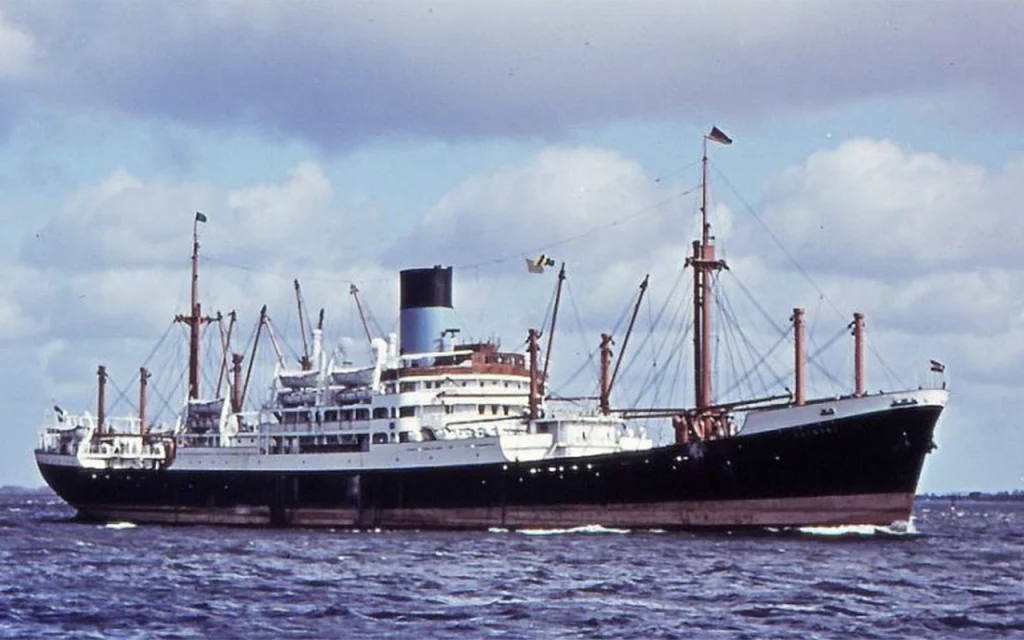
What Historical Features Can Still Be Identified on The Laertes Wreck
Structural Remnants
- Hull and Superstructure: The wreck of the Laertes still displays remnants of its hull and superstructure, which can be explored by divers. The shape and structure provide insights into the ship’s design and construction, typical of early 20th-century merchant vessels.
- Cargo Holds: Portions of the cargo holds may still be intact, allowing divers to visualize how the ship was loaded with its war materials, including tanks and aircraft.
Artifacts
- War Materials: Some remnants of the cargo, such as parts of military vehicles or equipment, may still be present. These artifacts contribute to the historical narrative of the ship’s last voyage and its role in the war effort.
- Ship’s Equipment: Various pieces of shipboard equipment, such as winches, pulleys, and possibly remnants of the steam machinery, may still be visible. These elements help illustrate the operational capabilities of the Laertes.
Marine Growth and Ecosystem
- Artificial Reef: Over the years, the Laertes has become an artificial reef, leading to significant marine growth. Divers can observe how marine life has adapted to and thrived around the wreck, creating a vibrant underwater ecosystem.
- Coral and Invertebrates: The presence of corals and various invertebrates on the wreck not only enhances its ecological value but also provides a living history of the ship’s transformation into a reef habitat.
Historical Context
- Documentation of the Sinking: The ship’s sinking is well-documented, providing context for divers. Understanding the circumstances surrounding its loss, including its cargo and the attack by U-109, adds depth to the diving experience.
What Safety Measures Are in Place for Divers Visiting The Laertes
- Pre-Dive Briefing: Divers are usually given a thorough briefing about the site, including potential hazards, dive depth, and the layout of the wreck.
- Buddy System: Divers are encouraged to dive in pairs or groups to ensure safety and provide assistance in case of emergencies.
- Equipment Check: Prior to diving, all equipment should be checked for functionality, including tanks, regulators, and buoyancy control devices.
- Depth and Time Limits: Divers are advised to adhere to depth limits and time constraints to avoid decompression sickness.
- Emergency Procedures: Familiarity with emergency procedures, including ascent rates and how to handle equipment failures, is crucial.
- Local Regulations: Divers must comply with local diving regulations and guidelines, which may include restrictions on touching or removing artifacts from the wreck.
- Environmental Awareness: Divers are encouraged to be mindful of the marine environment and to avoid disturbing the ecosystem surrounding the wreck.
List of Dive Shops That Prove Diving Trips to This Shipwreck
- Cape Canaveral Dive Center
- Offers a variety of diving services, including trips to local wrecks. They may provide guided dives to the Laertes and other nearby sites.
- Scuba World
- Located in the Cocoa Beach area, this dive shop often organizes dives to various wrecks along the coast, including historical sites like the Laertes.
- Diving with a Purpose
- This organization focuses on marine conservation and may organize dives to shipwrecks, including educational opportunities related to historical wrecks.
- Aqua Blue Scuba
- Based in Cocoa Beach, they offer dive trips and could potentially include the Laertes in their itineraries.
- Local Dive Charters
- Many local charter companies operate in the area and may offer customized dive trips to specific wrecks, including the Laertes.
Central Florida Wrecks
- SS Breconshire
- Georges Valentine
- Hog Heaven
- Urca De Lima
- USS Rankin
- Ana Cecilia
- United Caribbean
- USS Mindanao
- The Laertes
- Berry Patch Tug Wreck
- The Liberty Ship
- The Ana Cecilia
- The Cities Service Empire
- USS Accokeek
- The Tortuga Wreck
- Princess Ann Wreck (Palm Beach)
- Okinawa Wreck (Pompano Beach)
- MG-111 Wreck (Jupiter)
- Lady Luck Wreck (Pompano Beach)
- Rodeo 25 Wreck (Pompano Beach)
- Lowrance Wreck (Pompano Beach)
- RSB-1 Wreck (Deerfield Beach)
- Rebel Wreck (Deerfield Beach)
- Noulla Express Wreck (Fort Lauderdale)
- Sucre Wreck (Fort Lauderdale)
- Captain Tony Wreck (Pompano Beach)
- Peter McAllister Wreck (Pompano Beach)
- Guy Harvey Wreck (Fort Lauderdale)
- Quallman Tugs Wreck (Pompano Beach)
- Miller Lite Wreck (Pompano Beach)

